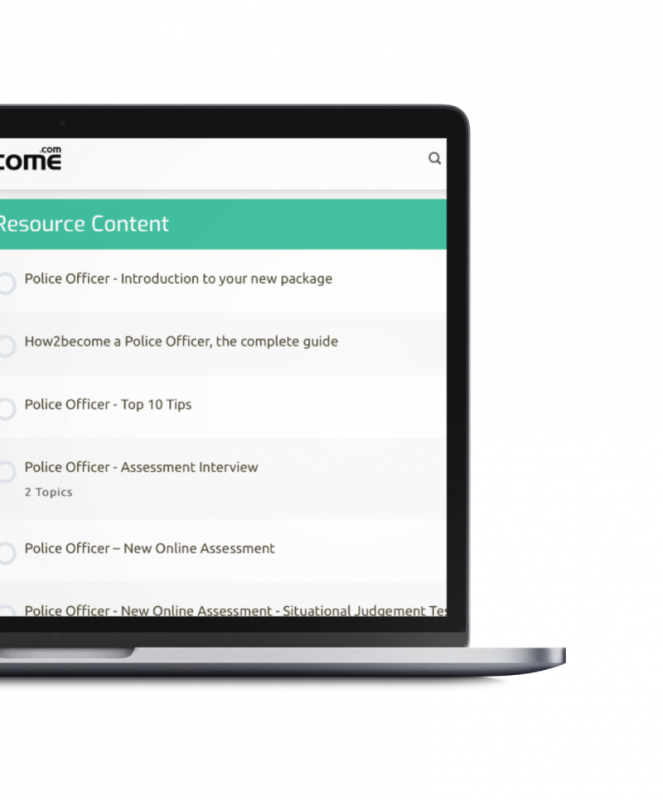
IN-TRAY AND E-TRAY EXERCISES
Sample test questions and answers for in-tray and e-tray assessments.
4.9/5 Rating | 1,000+ Reviews ![]()
Training That Works
Discover insider secrets and a masterclass of testing practice material that has helped 100s of candidates pass their assessment tests.
Unlock Your Potential
Whether you’re just starting out or you know what to expect, you will get access to 100s of questions, with solutions that will catapult your chances of success.
Powerful Resources
Get instant access to the material right now which includes mock exercises to improve your speed and decision-making!
If you’re heading into a graduate scheme, or any kind of role that requires situational judgement and organisational skills, it’s quite possible that you’ll be required to pass an In-Tray or E-Tray assessment. These exercises are designed to assess how well you can read, interpret, and apply information to a range of situations. Likewise, you’ll be tested on your prioritisation skills, as well as whether you meet the core competencies of the role which you are applying for.
WHAT IS IN-TRAY?
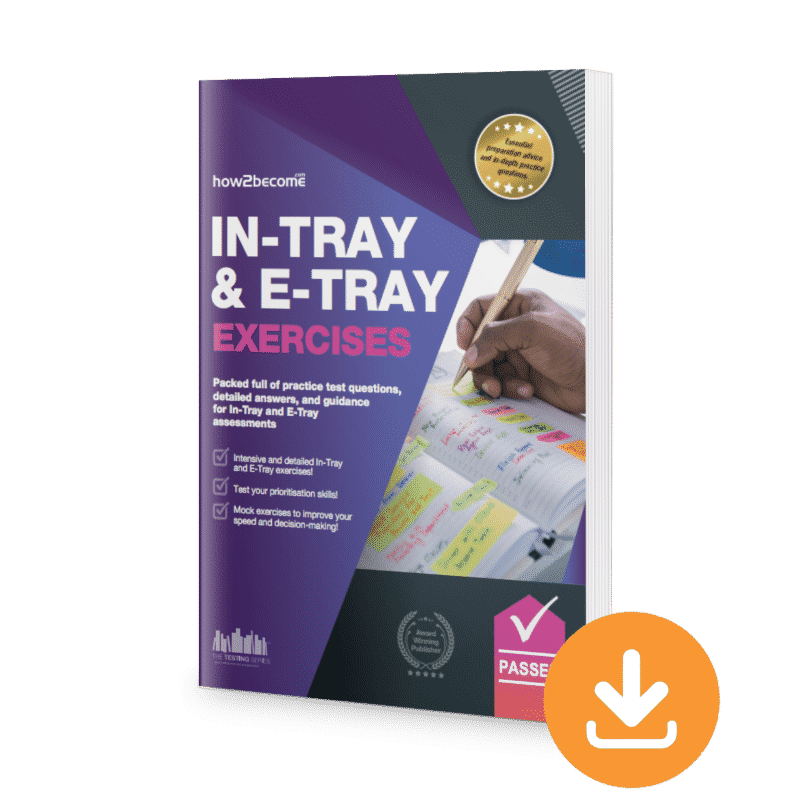
WHAT IS E-TRAY?
E-Tray exercises are simulations of possible scenarios you might encounter whilst at a computer workspace. Unlike In-Tray exercises, which are completed on paper, E-Tray exercises are completed online, so you’ll need access to a computer in order to complete them. You are tested via a series of emails and requests which arrive in a virtual email inbox.
The E-Tray Exercise is divided into three sections:

Reading and Comprehending Background Information
You will be expected to read a series of documents giving you introductory information about the role you will be fulfilling during the exercise. The information in this section will be vital for completing the E-Tray exercise.
Identifying the Least and Most Effective Responses to a Series of Emails
You will be given a number of emails, all of which come with a series of responses. You will need to choose the best and worst responses.

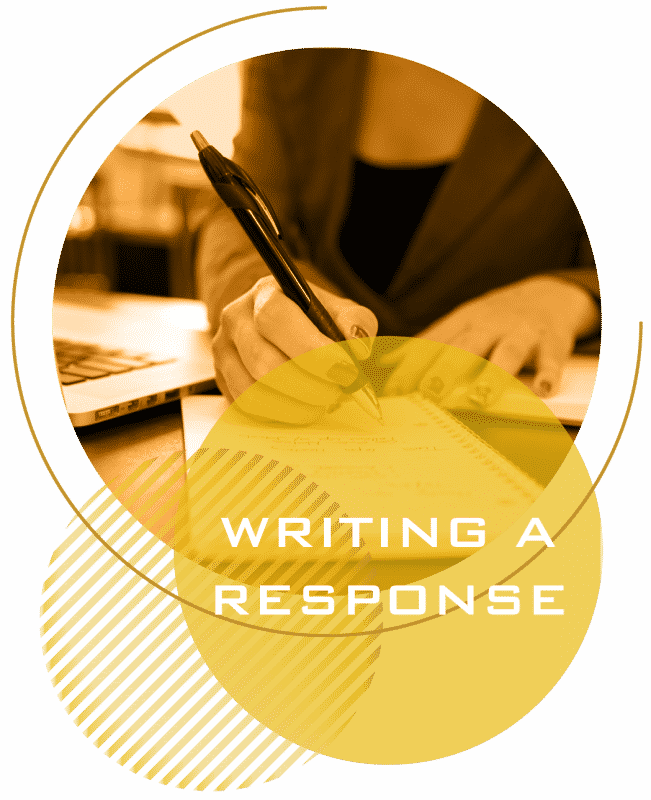
Writing a Response
In this section, you will need to write a response based on the information in the exercise. This is a written section of prose which you will need to construct, which means that your written communication skills will be tested.

PASS YOUR IN-TRAY OR E-TRAY TEST

- Explanations for both In-Tray and E-Tray exercises, including assessment criteria, types of question, and test format;
- Expert tips for both the In-Tray and E-Tray exercises, giving you the best possible chances of success;
- Clear guidance throughout takes you from the beginning to the end of your In-Tray or E-Tray process;
- Sample questions and practice questions to give you an idea of what the real test will look like, as well as giving you a chance to practice;
- All of the above written in a clear, easy-to-read format which will make learning how to pass In-Tray and E-Tray exercises much easier!
Sample In-Tray Test Question
To help you get a better understanding of what an in-tray test involves, let’s take a quick look at a sample question.
FREE | 1 Exercise
In-Tray Test Practice Question
To: You
Subject: Acting Manager
—-,
Congratulations and thank you for taking on Andrew’s responsibilities as manager of the copywriting team while he’s away. We all appreciate that you have a lot on your plate with your own tasks, so we hope that the workload from managing the team won’t be too extreme.
As you know, Andrew likes to meet with each of his team members for a ten-to-fifteen minute catch-up once every two weeks. Andrew informed me on Friday that his last catch-up with the team was two weeks ago. Therefore, it would be great if you could get in touch with the rest of the team and find a time to meet with each of them. You’re probably well aware of what’s going on between everyone on the team, so hopefully a catch-up will be straight-forward. Please organise these for the end of the day.
In addition, I’d like you to take a look at some possible clients with projects that the team will be working on. I’ll send a brief report with each of the clients’ projects sometime later today, but if you could also decide on which (if any) of the clients to work with by the end of the day would also be excellent.
If you have any queries, or have any questions about your new role, don’t be afraid to get in touch.
Thanks,
Linda Peterson,
Managing Director
Task 1
Choose the most effective and least effective course of action:
| Most Effective | Least Effective | |
|
Hold a group catch-up with the entire copywriting team to save time.
|
||
|
Email or chat to each of the copywriting team members to find a time which suits them.
|
||
| Ask Andrea to send you a list of times which are likely to suit the copywriting team. | ||
| Choose a time which suits you for each catch-up meeting. |
TIPS FOR IN-TRAY EXERCISES
It’s extremely important that you prioritise each task set out before you. Generally speaking, there are three criteria which you should use in order to prioritise your tasks:
- Urgency – The closer the deadline, the sooner it needs to be done. As a rule, you shouldn’t leave any of these tasks until the last minute, because you never know if another task might appear and take precedence. Complete tasks based on their urgency as much as possible.
- Size and Complexity – The bigger a document, or the more complex a task, the more time it’s going to take to complete it effectively. You should try and complete the bigger tasks as soon as possible so that you can get them out of the way, making room for the smaller tasks.
- Importance – This is slightly more abstract than the other criteria, since the importance of a task will depend on your scenario. For example, if you receive a task from the director of the company you’re working for, then it might take precedence over a task assigned by a team-mate. There’s no real trick to this: just use your own judgement to figure out which tasks are more important than others.
While a lot of the key information will be supplied in the background information document, there might be more key details in the other items for the entire exercise. Therefore, it’s important that you read every document before you get started, since some new information in a document could change everything about how you approach the tasks.
In addition, reading every item before getting started allows you to prioritise everything effectively. You don’t have to read each piece closely before starting since you’ll do that later, but at least skim through each document for important details before starting on anything.
You don’t have to complete every task yourself. In some cases, you’ll have the opportunity to delegate tasks to other ‘members of staff’. Of course, these aren’t actual people, but if you can justify why you’re assigning the task to them then this is acceptable.
As part of the background information package, you might be given a chart listing relevant staff members at the company. While this can be used for completing tasks (such as figuring out who to forward a letter to), you might also be allowed to assign a task to a relevant staff member.
For example, you receive a note asking you to deal with a refund request. The company policy states that all refund requests must be processed by Katie, the Head of Quality Assurance at the company. In this case, it would be completely acceptable to delegate the task to her to complete.
In some cases, you will be asked to find a suitable individual to assign a specific task to. For example, your manager might have noticed that there was an issue with the office printer, and someone is required to get in touch with the manufacturer to resolve the problem. Your manager may specifically ask you to deal with this, or they might suggest that you find someone else to do it. In this case, you would try to find an individual with the clearest schedule as well as the best qualifications for the role.
In other cases, you might not be asked to delegate a task, but it’s appropriate given your workload or qualification. If this is the case, try to find an individual who is most suited for the task.

Pass Your In-Tray or E-Tray Test. First Time.
Crafted for everyone, no matter your skill level or background, this download was made to help you achieve one goal: pass your assessment.
WHAT WILL YOU LEARN?
Scoring Criteria
Essential information about how you will be assessed during an in-tray or e-tray assessment.
UP-TO-DATE FOR 2024
All exercises have been verified by our assessment panel experts for the 2024 tests.
PRACTICE SAMPLE TEST QUESTIONS
Step-by-step information on how to pass any style of in-tray or e-tray test.
FULLY-WORKED SOLUTIONS
Solutions for all questions so you can be confident in learning and improving your score.
INSIDER SECRETS
Insider tips on how to answer the questions and a breakdown on how you will be scored.
SCORE-BOOSTING STRATEGIES
Get ahead of the competition with unique and proven strategies 16 years in the making.
Customer Success Stories
Having helped 1,000s of people pass their assessment tests for over 16 years, it is no wonder our customers love us…

I would recommend it for the somewhat easier Entry-level Civil Service exams (non-FastStream), this book will have your confidence at 100% (not hyperbole), you will be ready I promise.

This book is a book for life and once you master it, you will never be scared of aptitude tests again.

Having recently sat the FastStream Graduate entry scheme into the Civil Service and F/CO I can confirm the style of question and the format and responses (multiple choice) are 90-95% similar to the exams I just sat which is fantastic.

Having purchased MANY MANY books ranging from IQ to Aptitude: personality, VR, Numeracy et al this book is exactly what you need for both E-TRAY and IN-TRAY. This book will make you a smarter and thriftier individual ready to work in public service and be a bureaucrat (if that’s your wish).

WHAT’S INCLUDED IN YOUR DOWNLOAD?
Complete guidance to ensure you pass the selection tests.
- What you can expect from your In-Tray or E-Tray assessment.
- How you will be assessed and what you must learn to score highly.
- Tips on how to prioritise tasks, based on what employers are looking for.
- Plenty of practice In-Tray and E-Tray questions.
- Example answers with detailed explanations to help you learn.
- A guide to improving your speed with our mock exercises.
- How to boost your score, using quick and concise strategies.

PLUS…BONUS!

BONUS
PLUS…30-Day Free Subscription Trial To The Online Psychometric Tests Testing Platform!
As well as life-time access to the In-Tray and E-Tray Tests download, this product also includes a 30-day free trial to Online Psychometric Tests Testing Platform (usually £9.99 + vat per month).

- 100s of additional practice questions to help boost your scores!
- Practice all of the test questions under timed conditions using our online testing suite.
- Instant online access.
- Compatible on mobiles, tablets and computers.
- Scores are tracked so you can focus on areas that need improvement.
Important: This powerful free trial costs £9.99 + vat every month for everyone else! You will get unrestricted access to all of the quick-win strategies to give you the advantage right away.
Worth £9.99, Yours FREE for 30-days*
*We want you to know: This is a subscription service that is charged at just £5.95 + vat per month after the 30-day trial expires. No minimum term. If you cancel before the 30-day trial ends, you will not be charged. Please see our terms for full details.
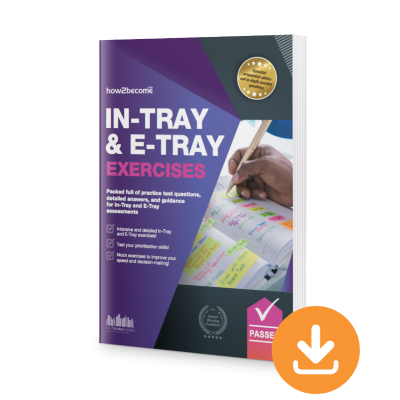
✓ 30-Day Money-back Guarantee
Did you know? All orders with How2Become are protected by our 30-day money-back guarantee. What ever the reason…or no reason at all…you can have your money back if this resource isn’t right for you (see our terms for full details).
WHY BUY WITH HOW2BECOME?
CREATED BY THE EXPERTS
PROVEN TRAINING
EXCLUSIVE FREE BONUSES
Firstly, these guides are created by us and our team of experts – we have all the answers to your questions and will help you succeed (like we’ve been doing for the last 16 years), we update our material frequently and you can contact us at any time with any questions you have.
Secondly, we provide exclusive bonuses with all our products that you won’t find anywhere else. These bonuses include free guides, powerful online testing suites and more!
Finally, our guides and training just work. Take a look at our TrustPilot page where you will see our rating of 4.9/5. There, our customers share their positive buying experiences and more importantly the time-saving success our resources have given them (hint: they passed their assessment).
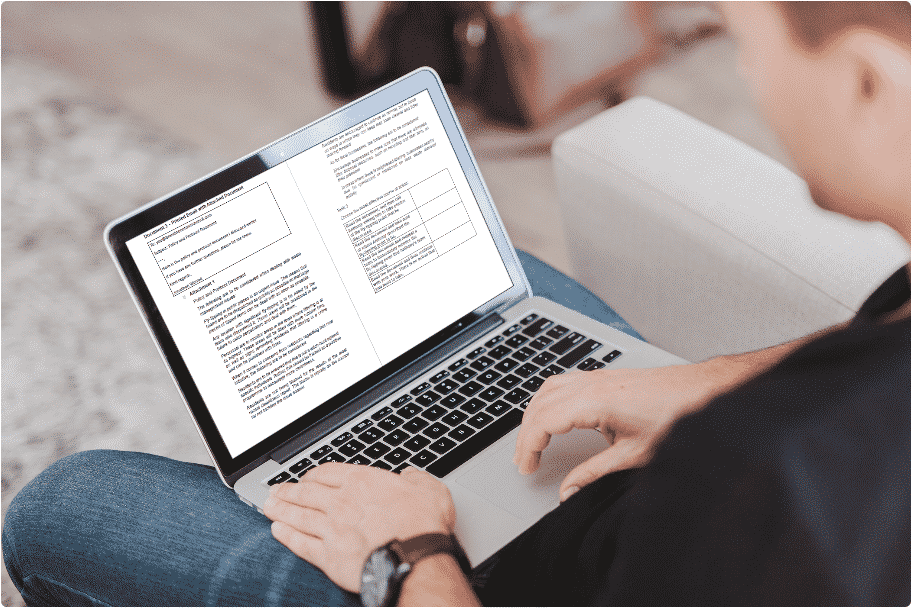
Learn how to PASS YOUR ASSESSMENT
We’ve helped 1,000s of aspiring applicants in their journey to succeed in a new career. Trust the UK’s #1 careers and education specialists to help you secure your role.
Get instant access »“Great variety of question types, exposes areas of weakness and gives you the means to improve. Clear and concise. Confidence builder. Great practice!”












